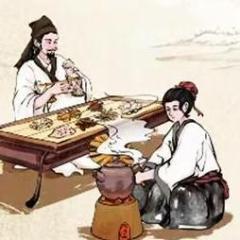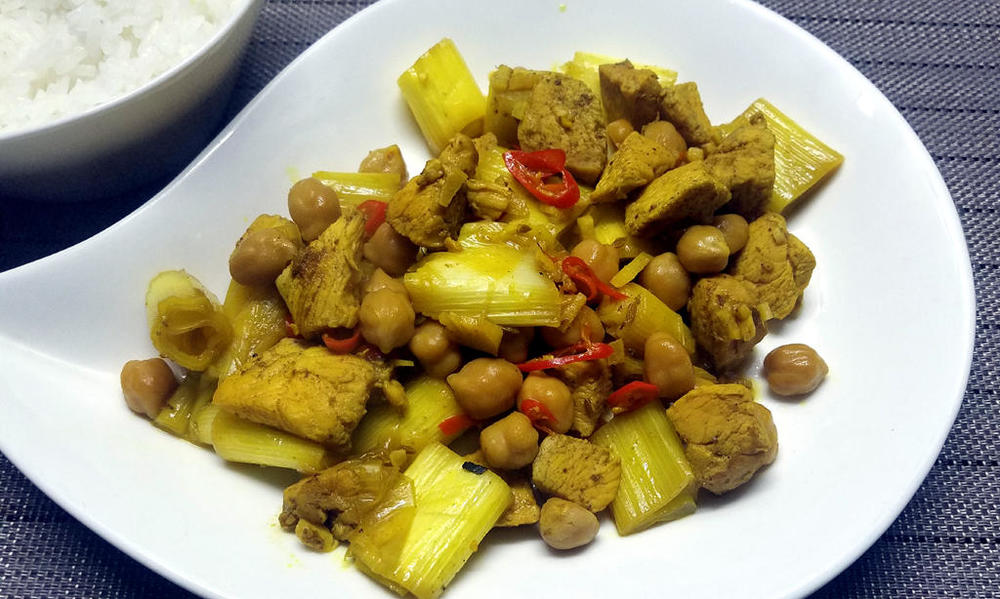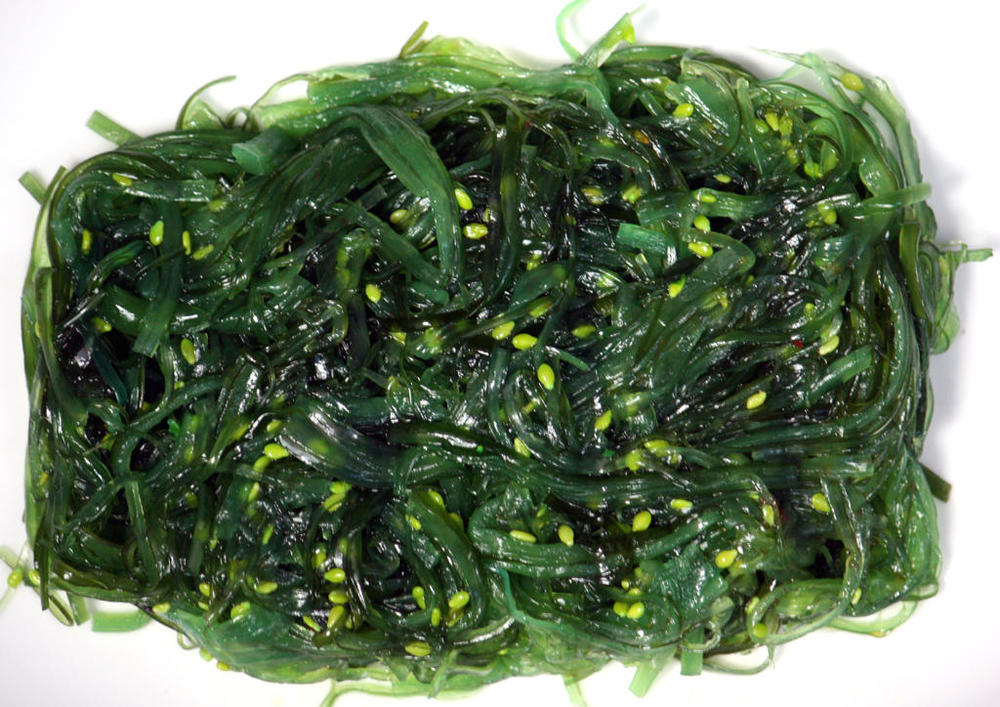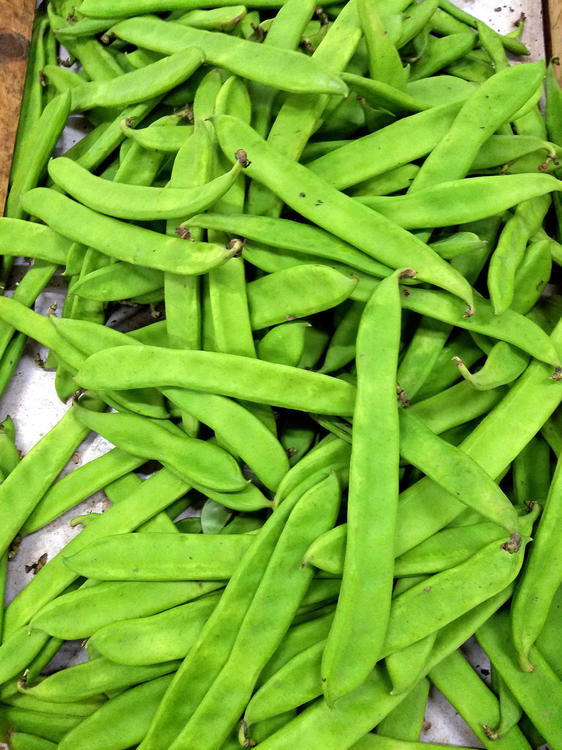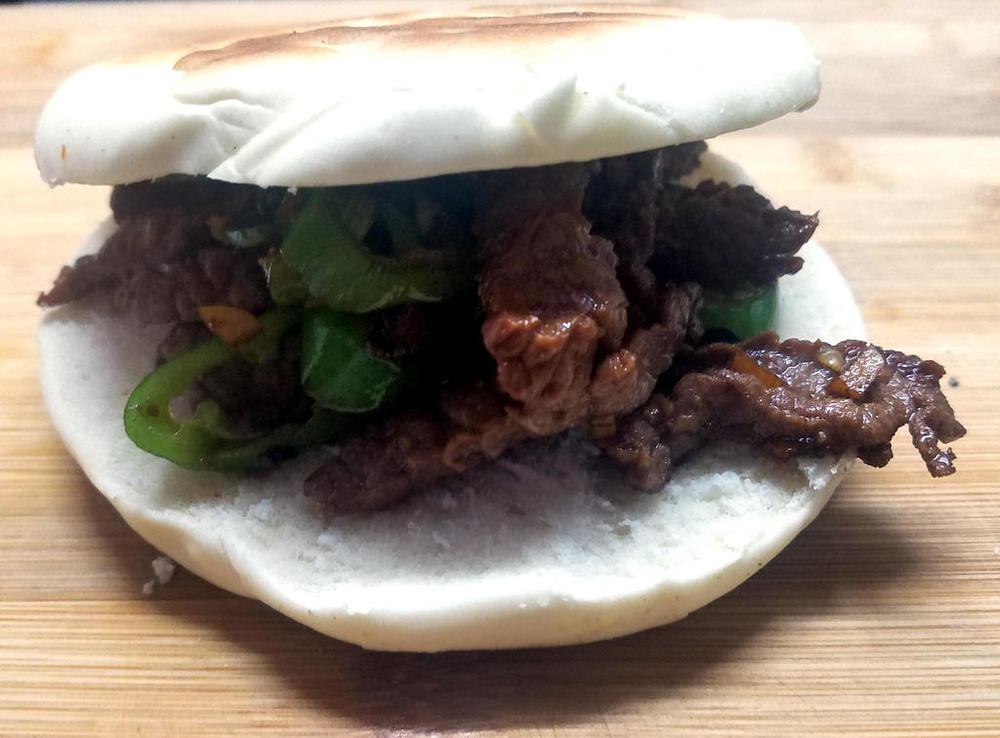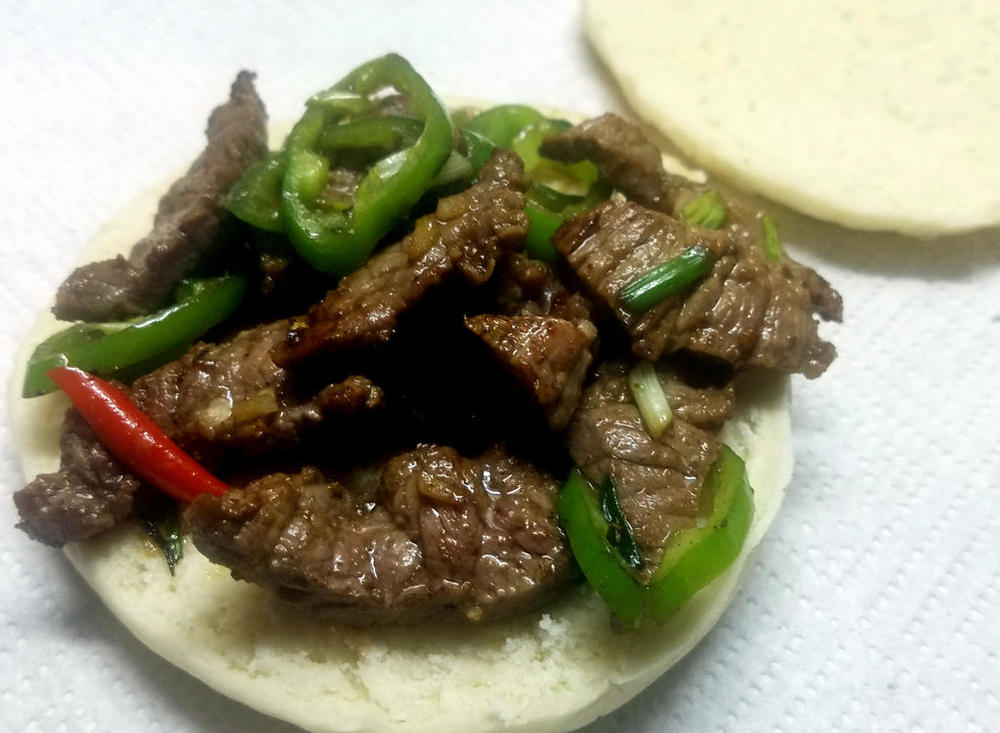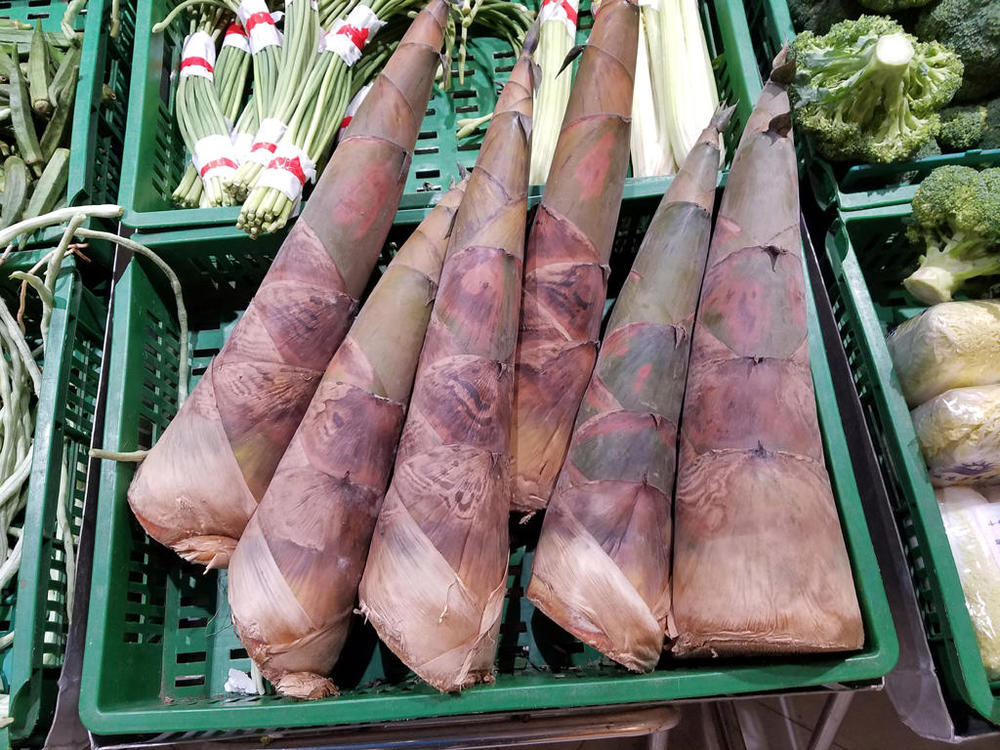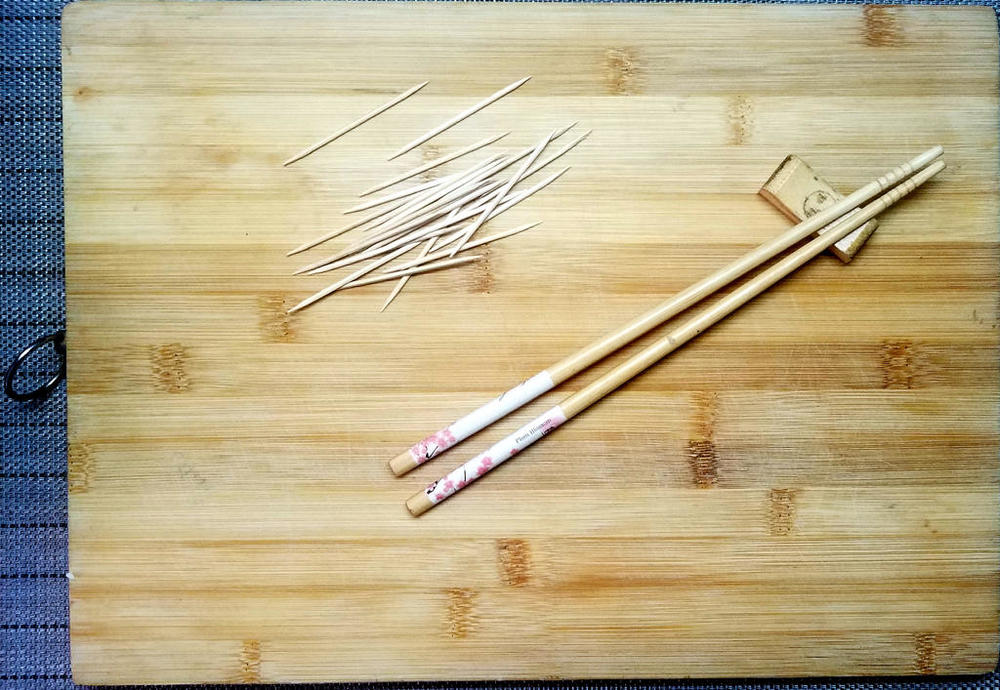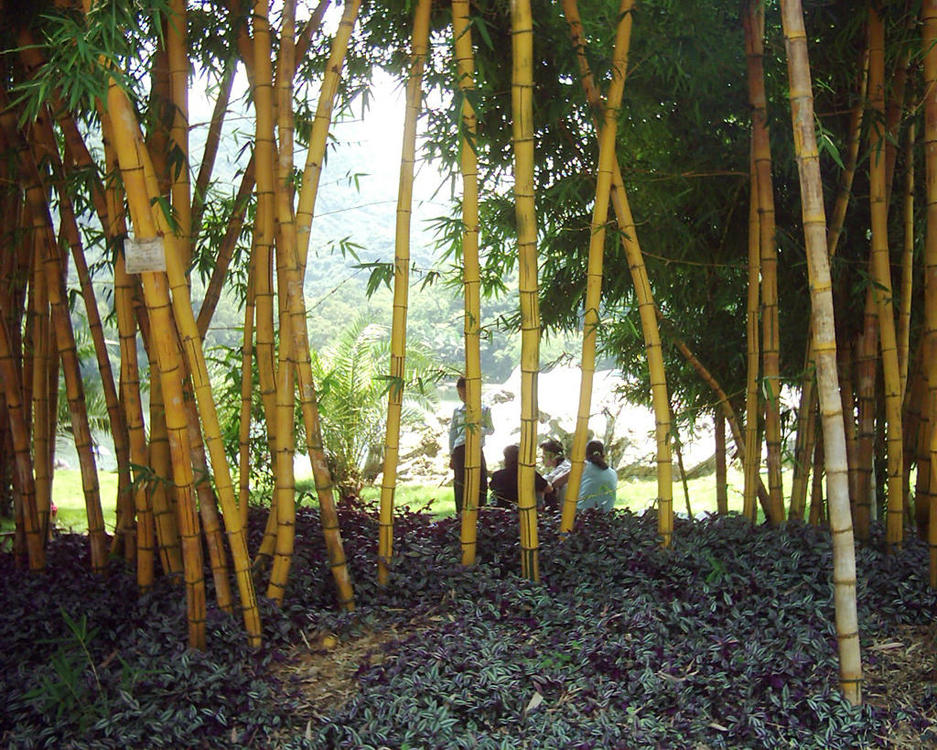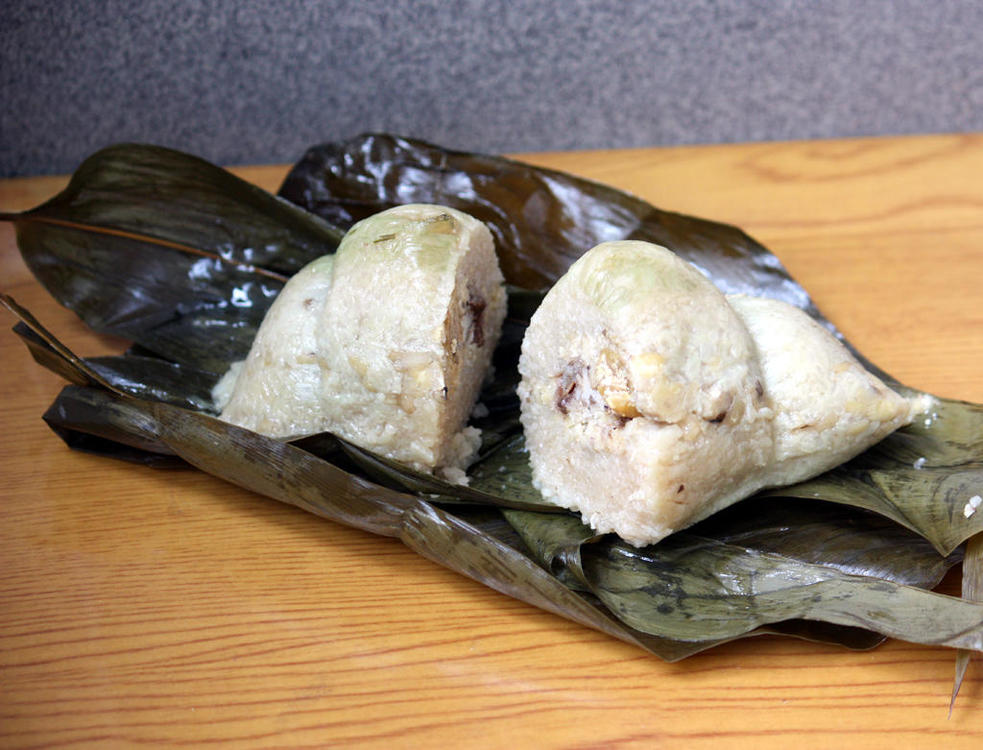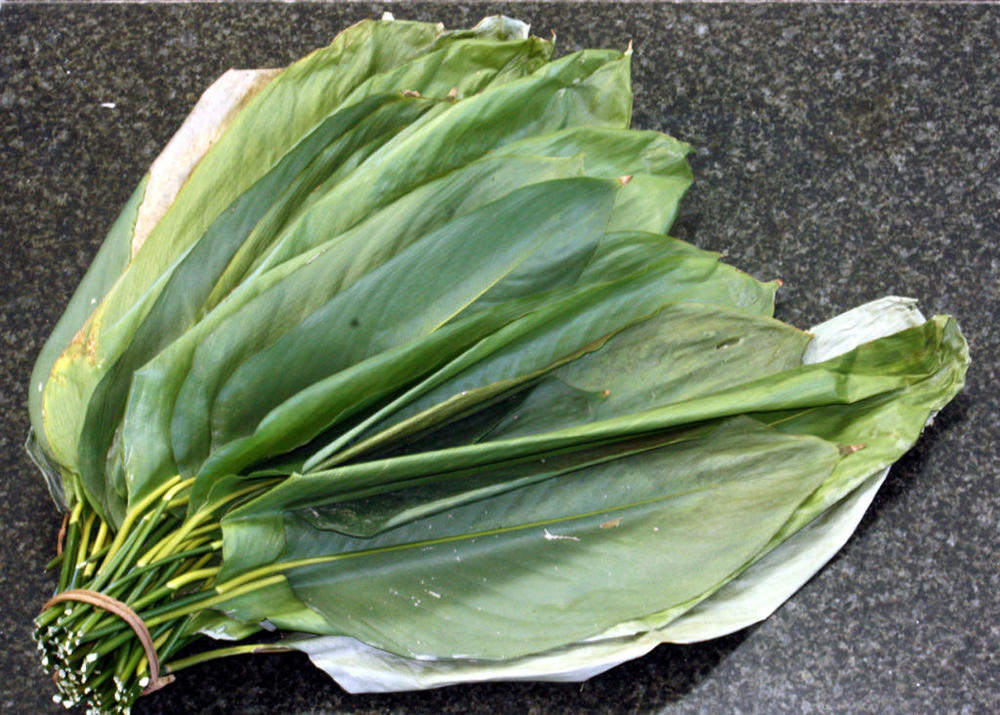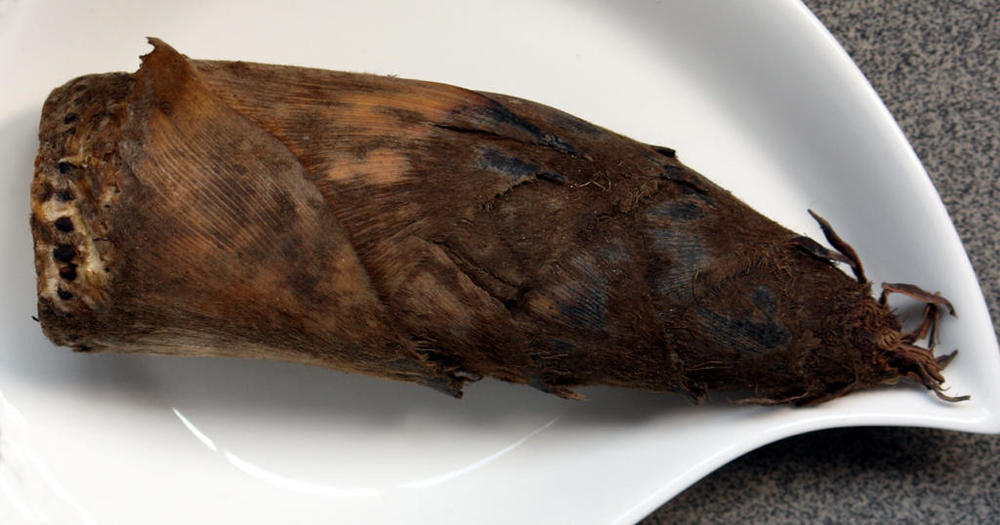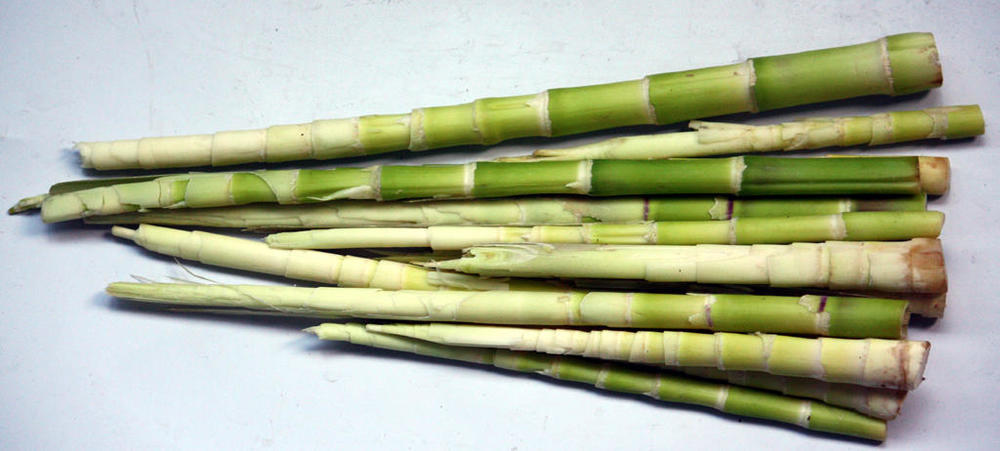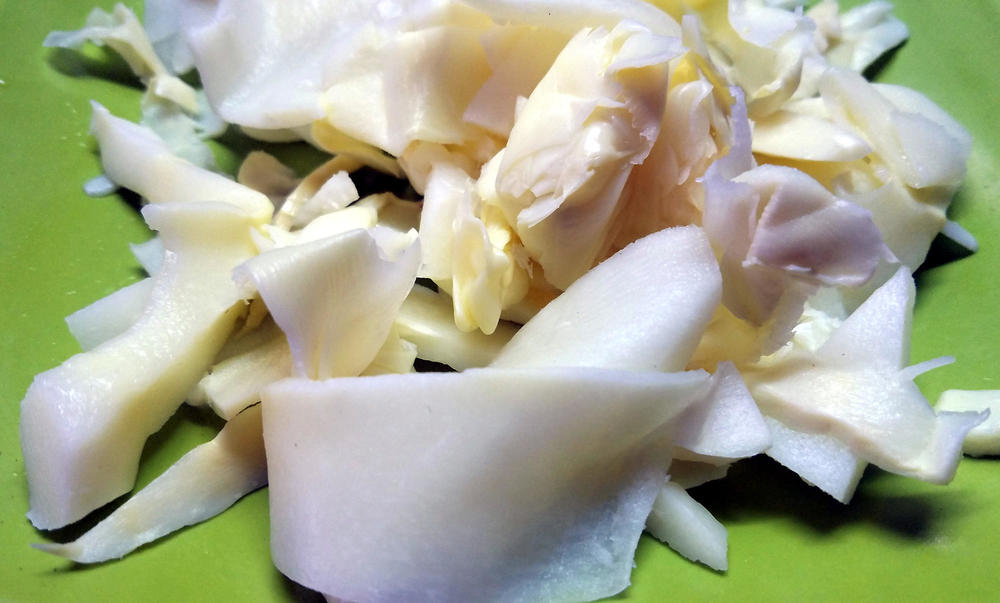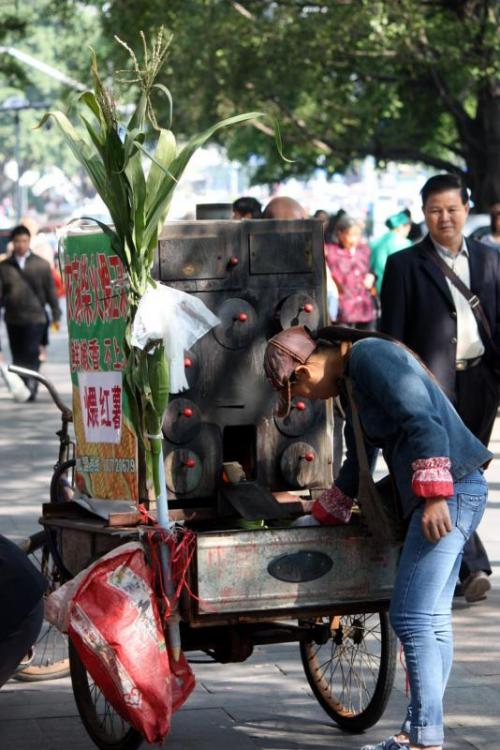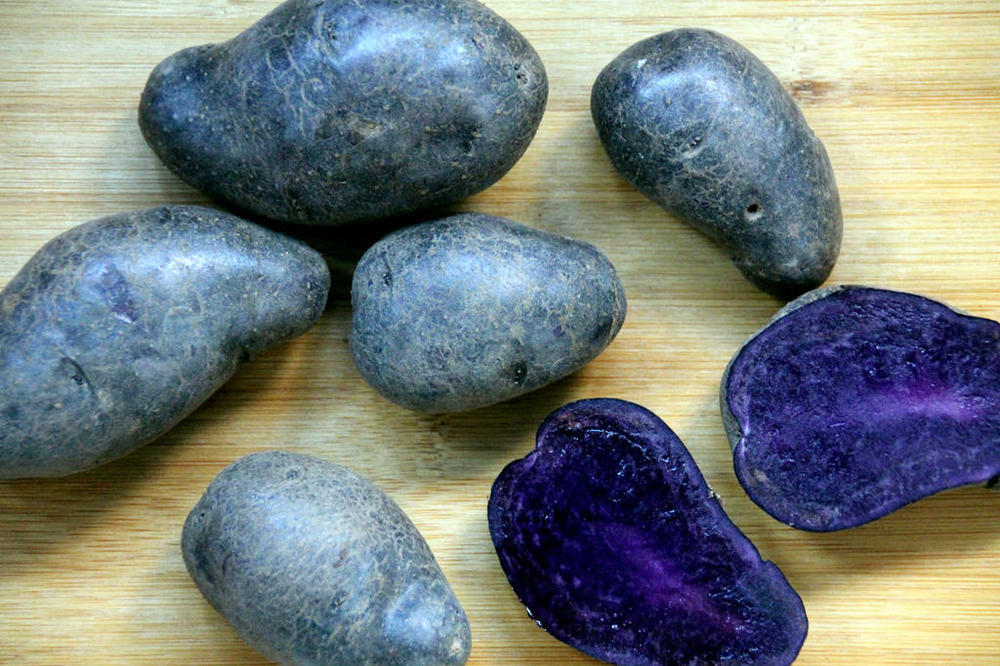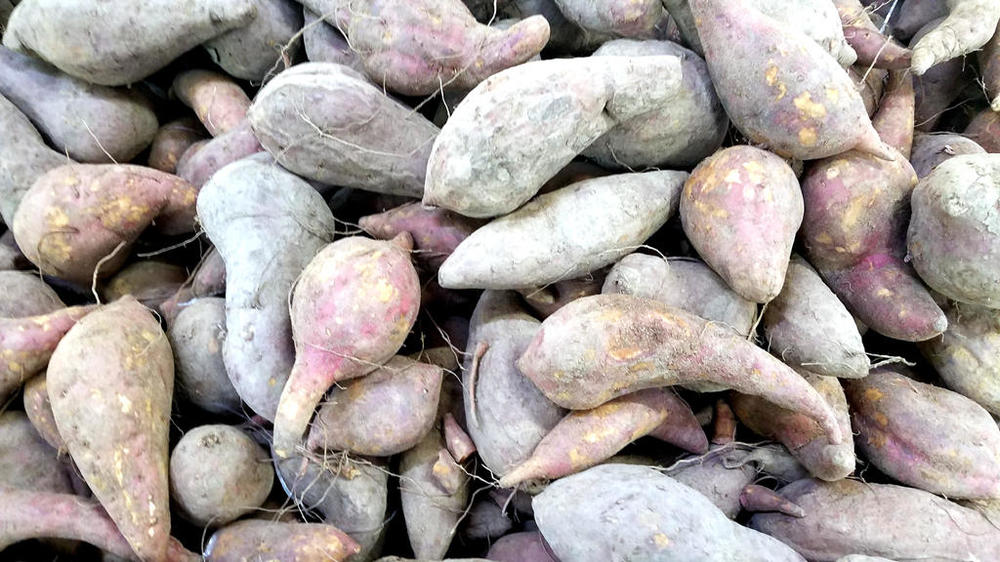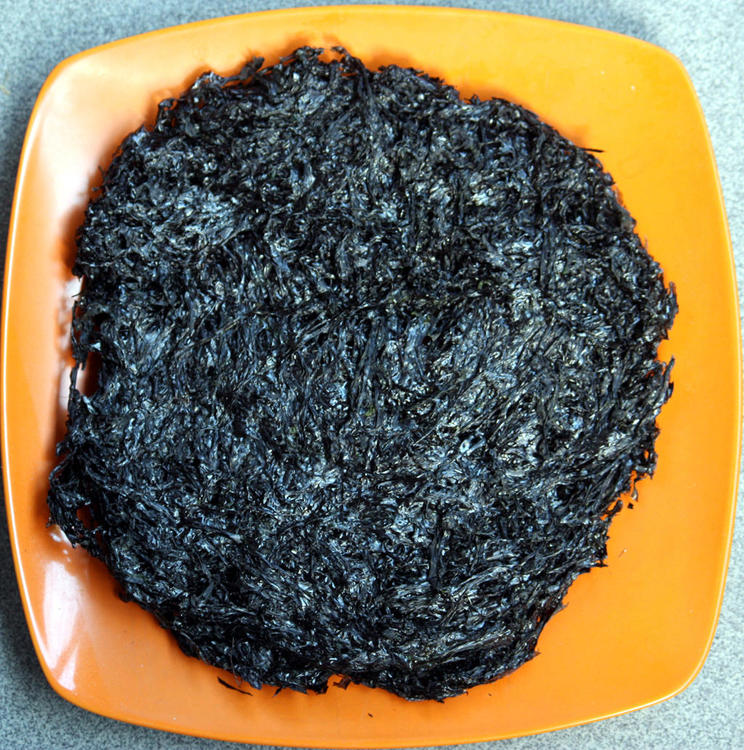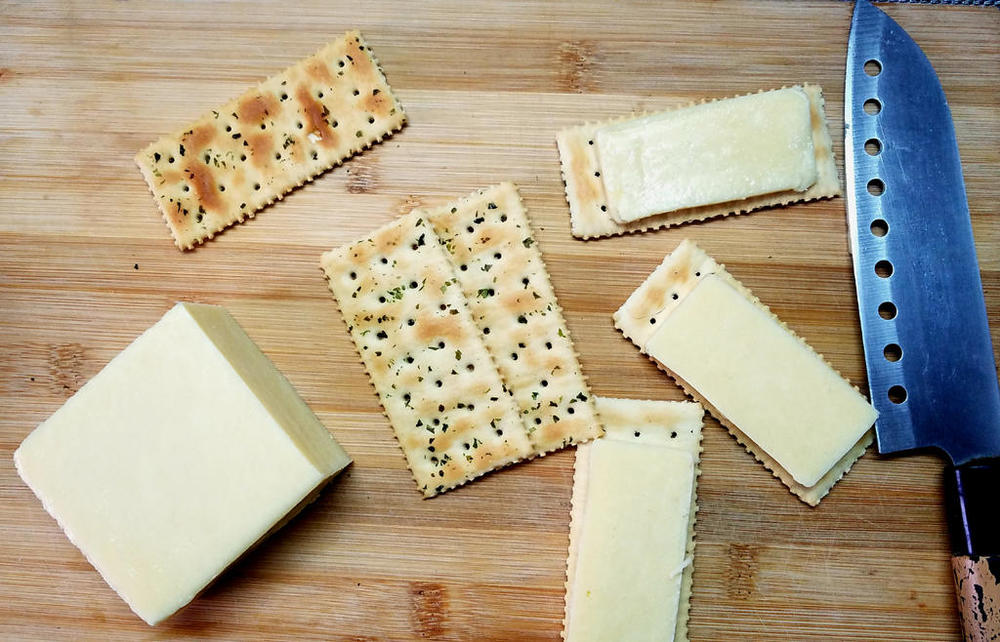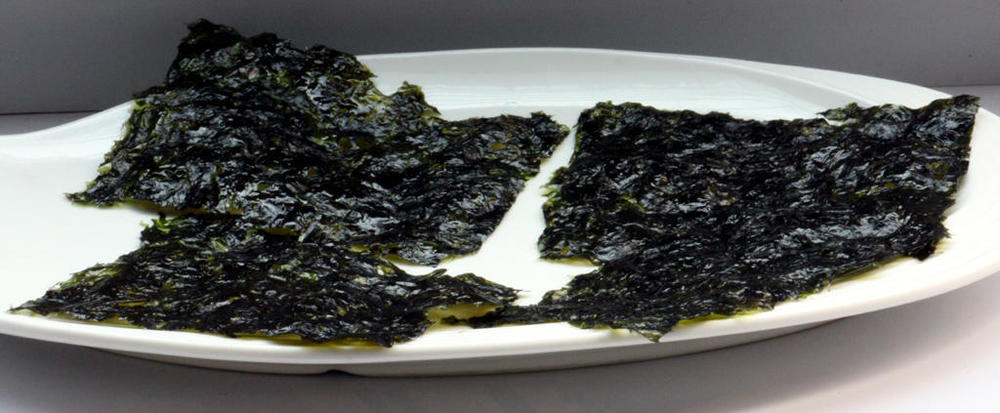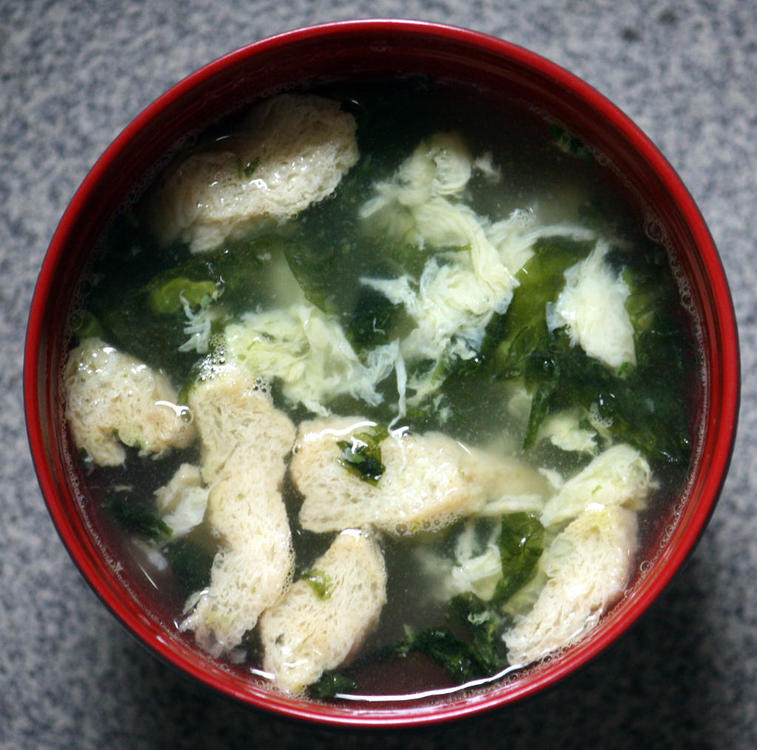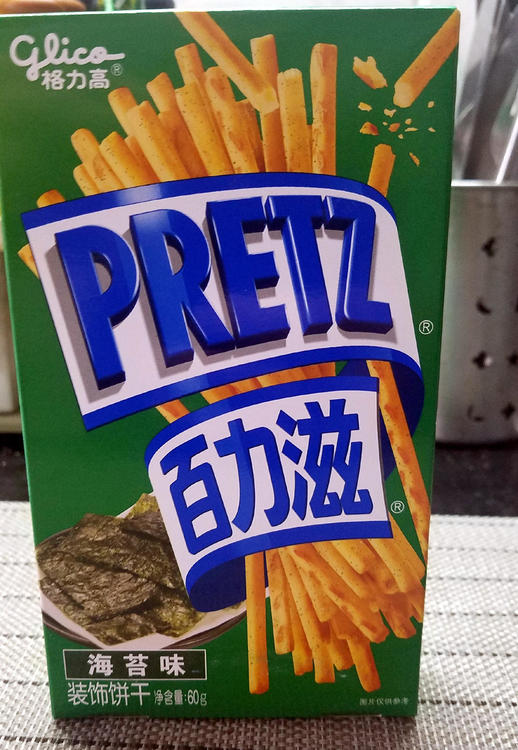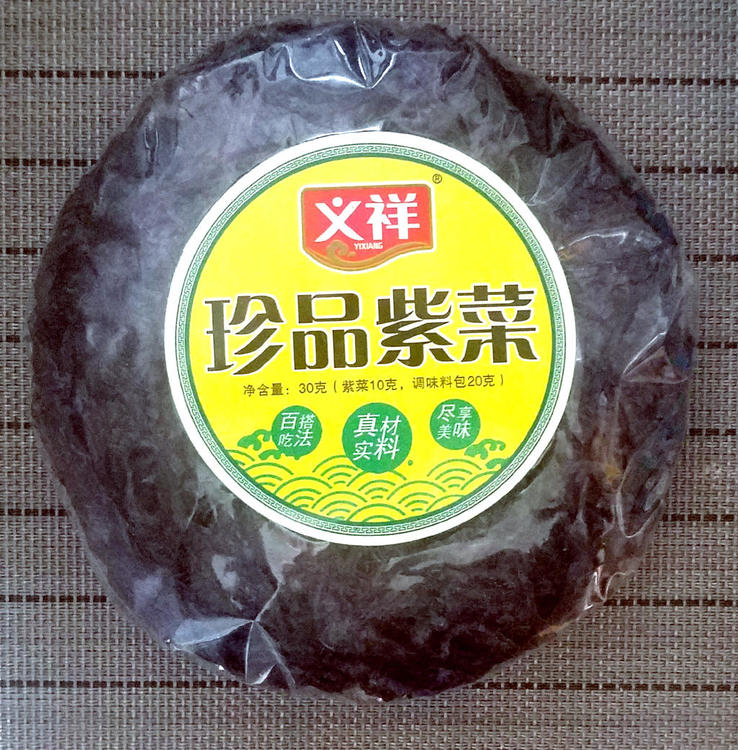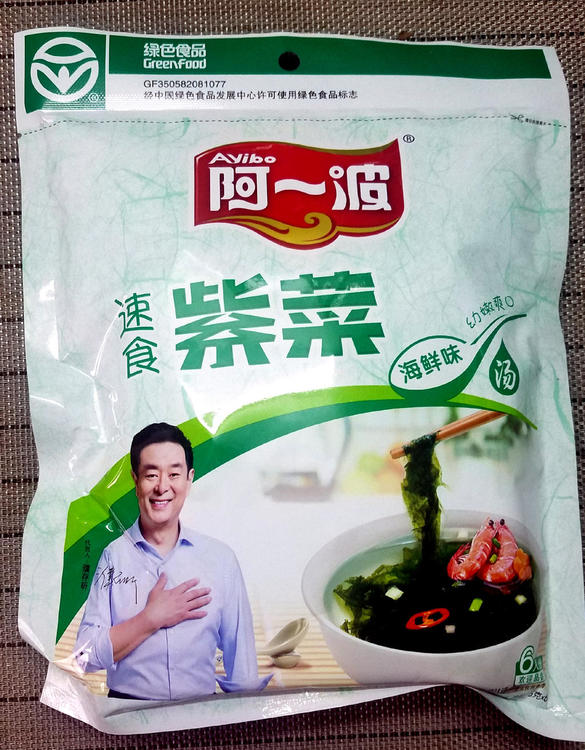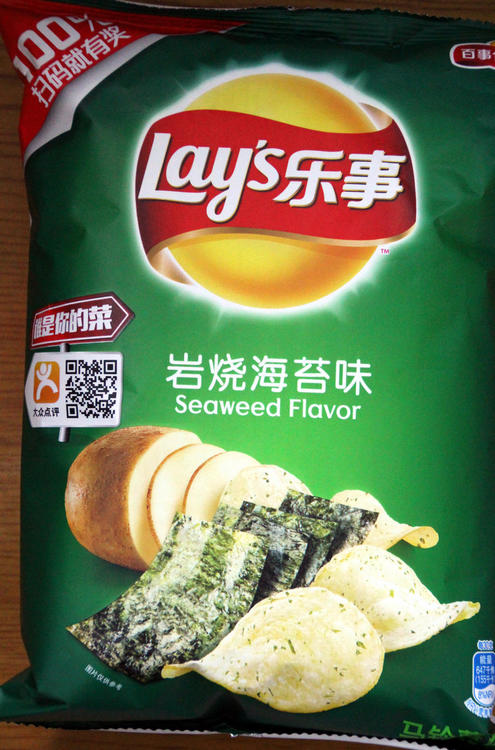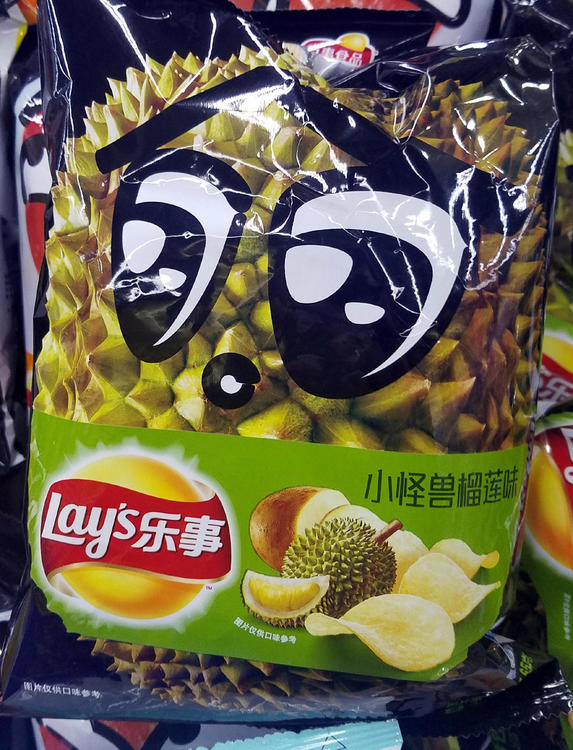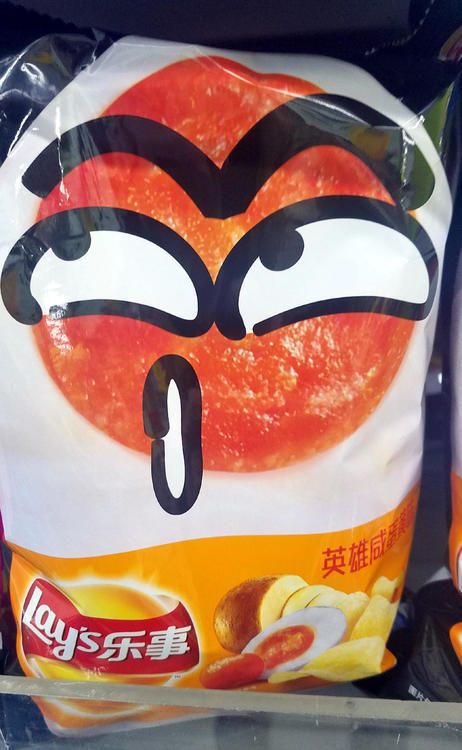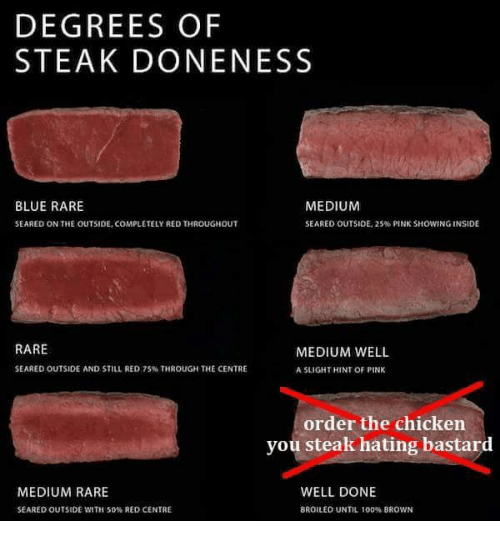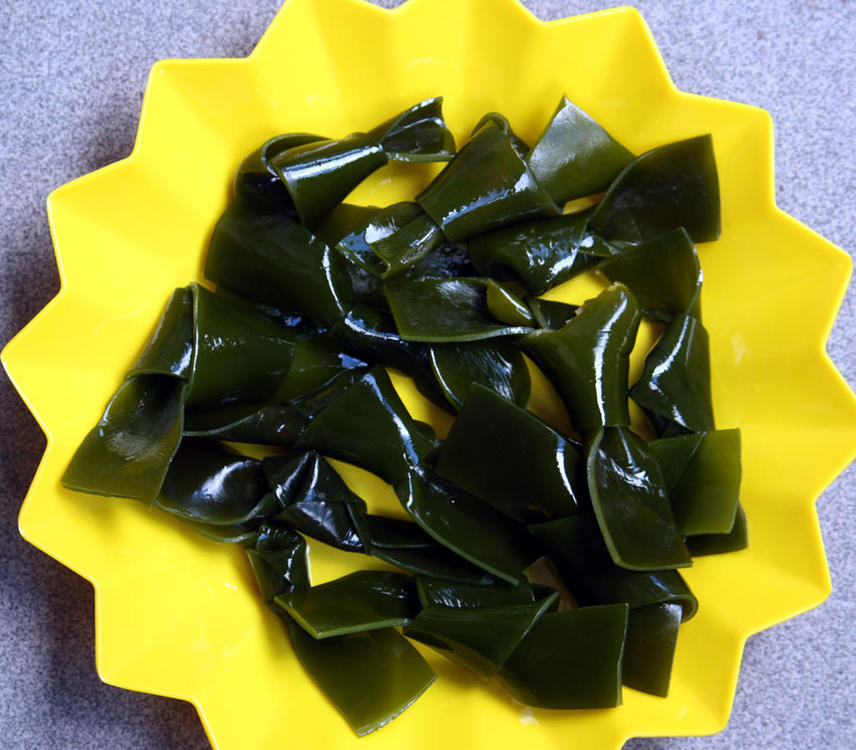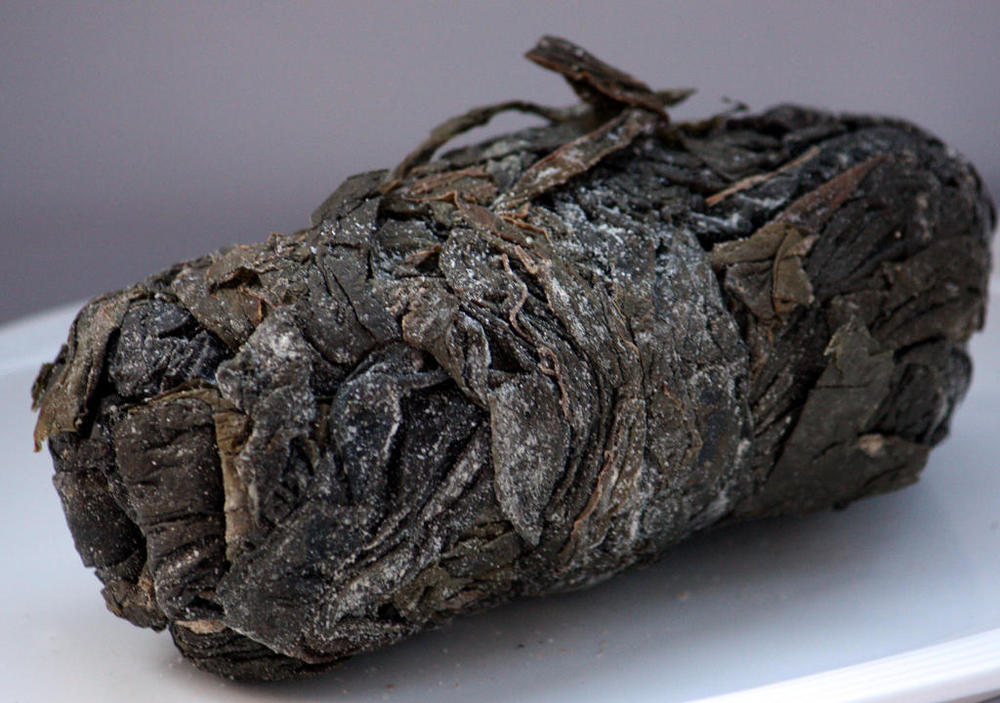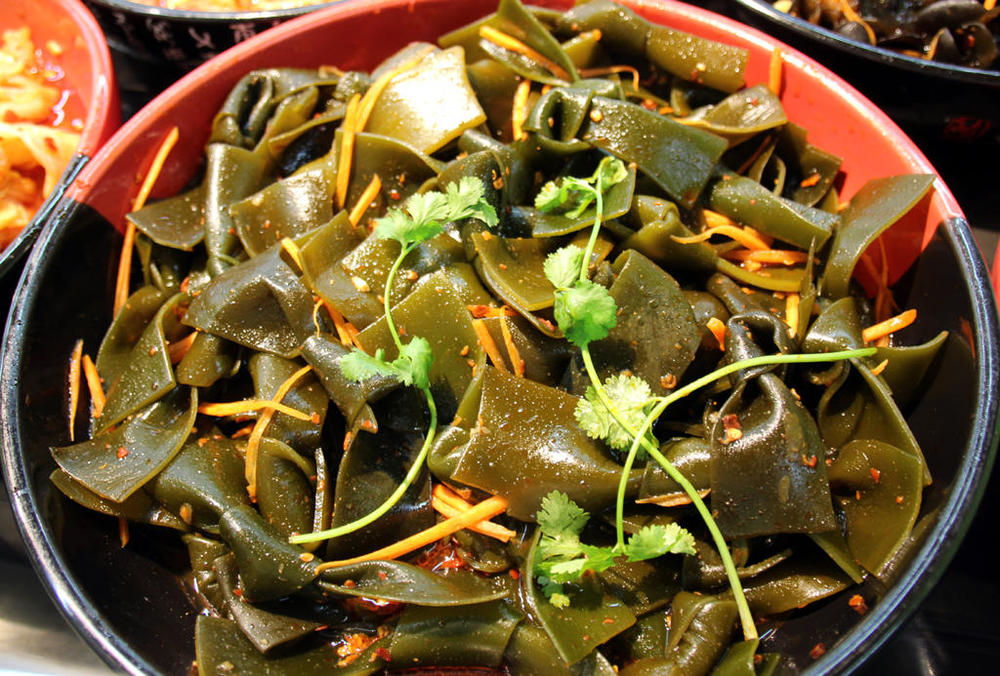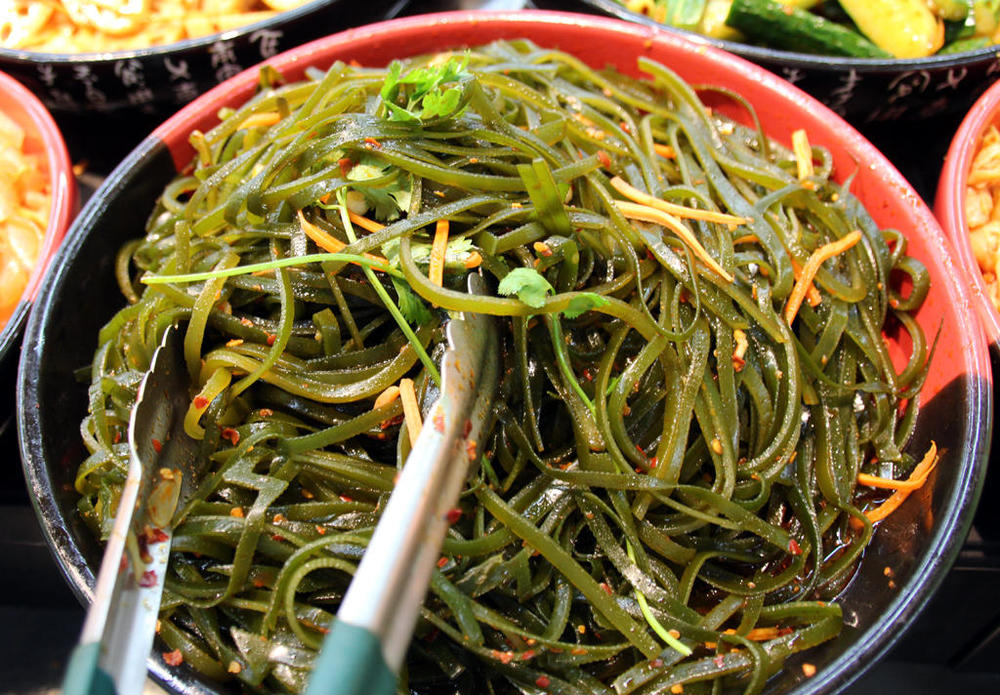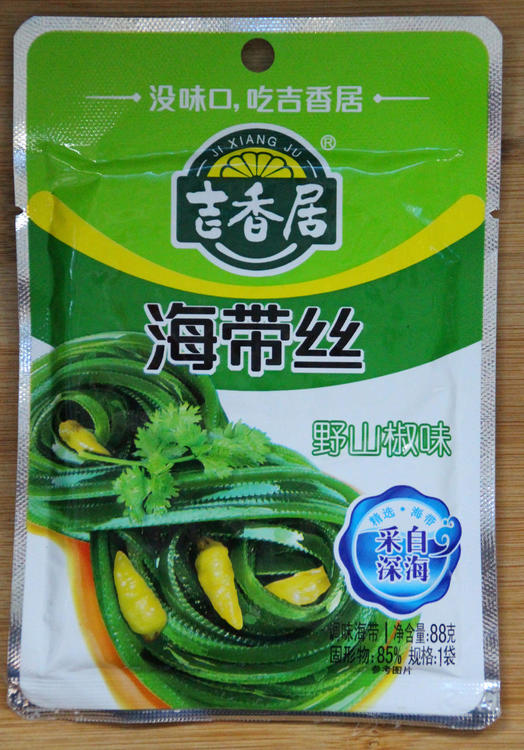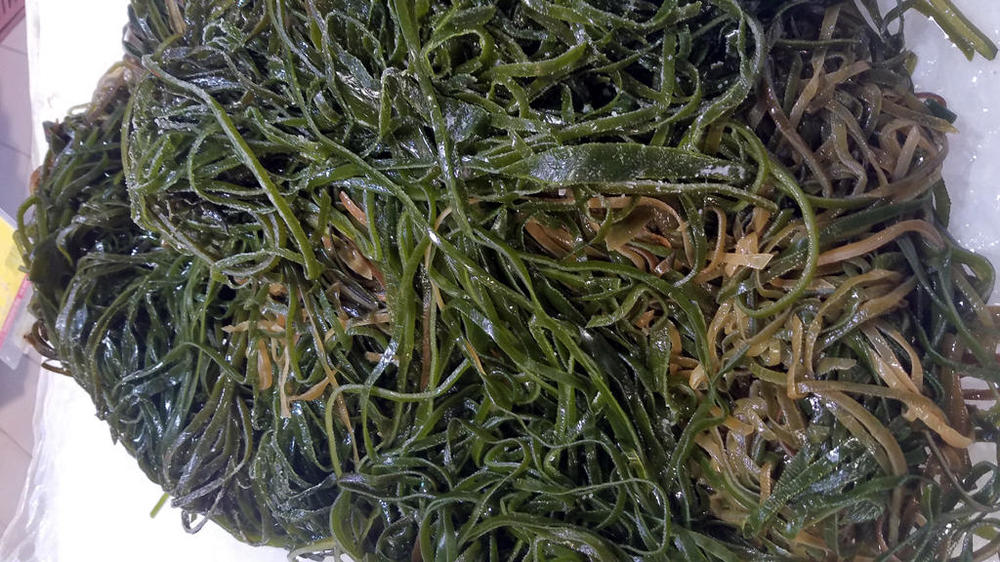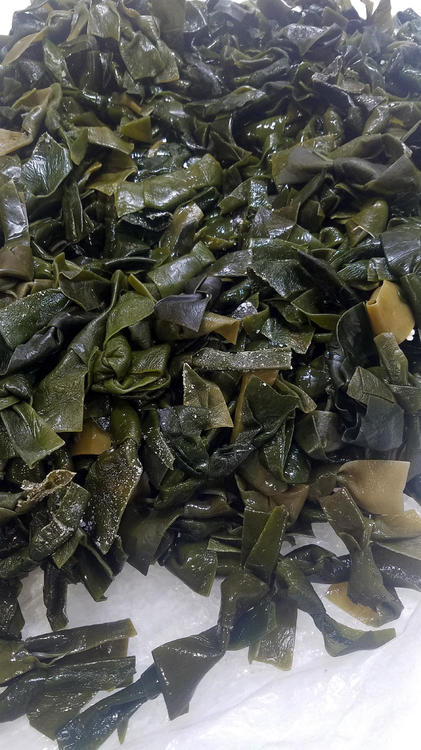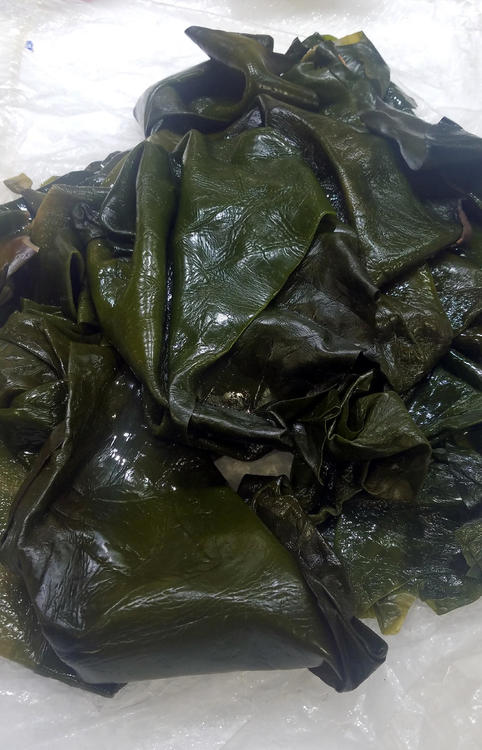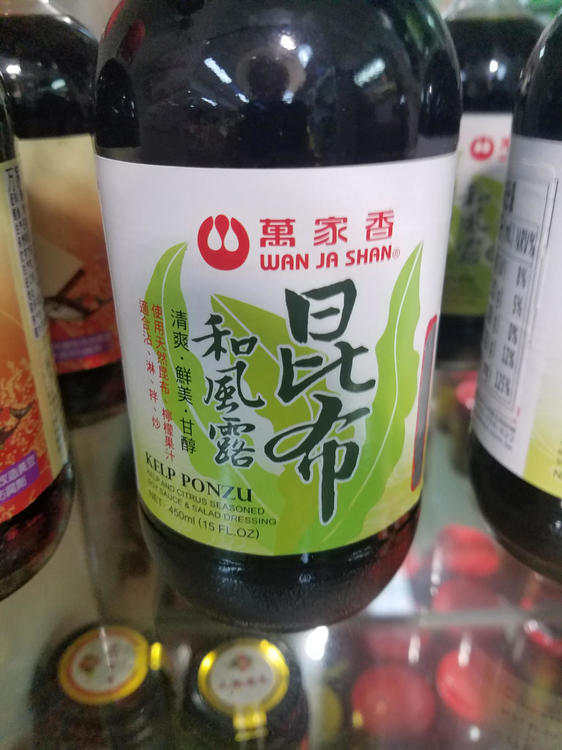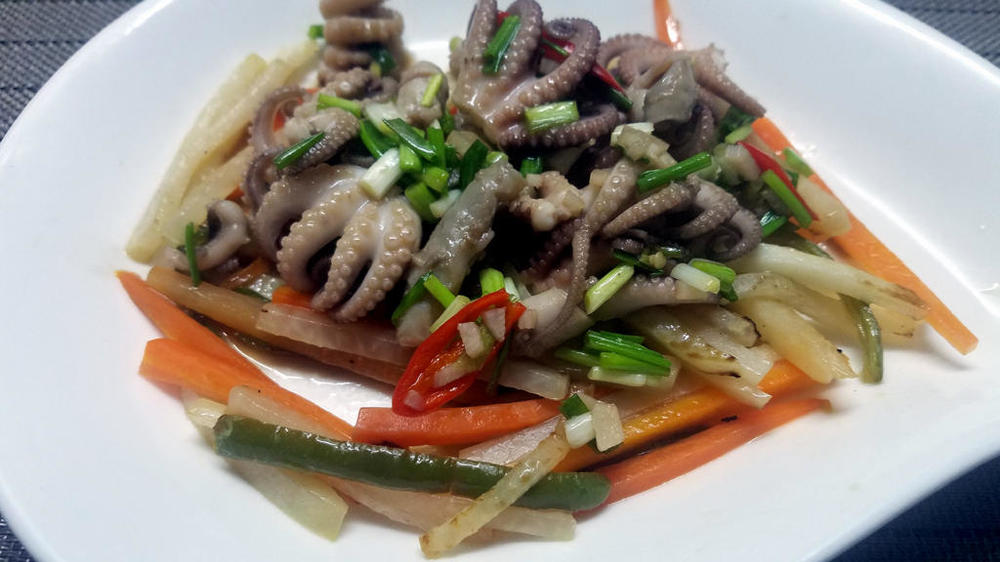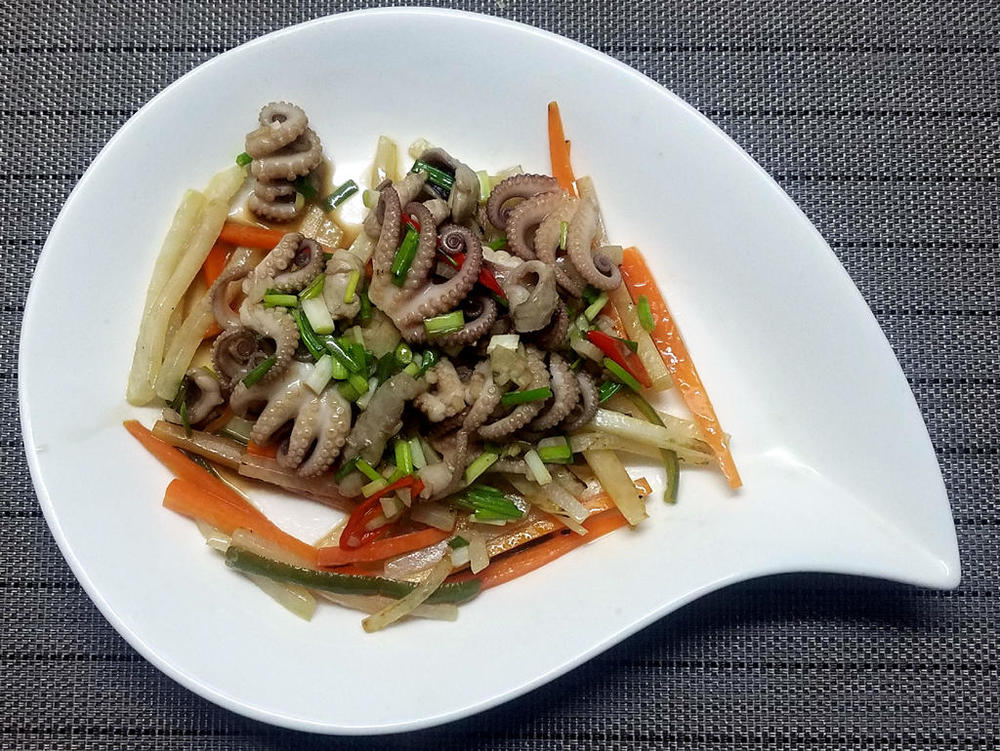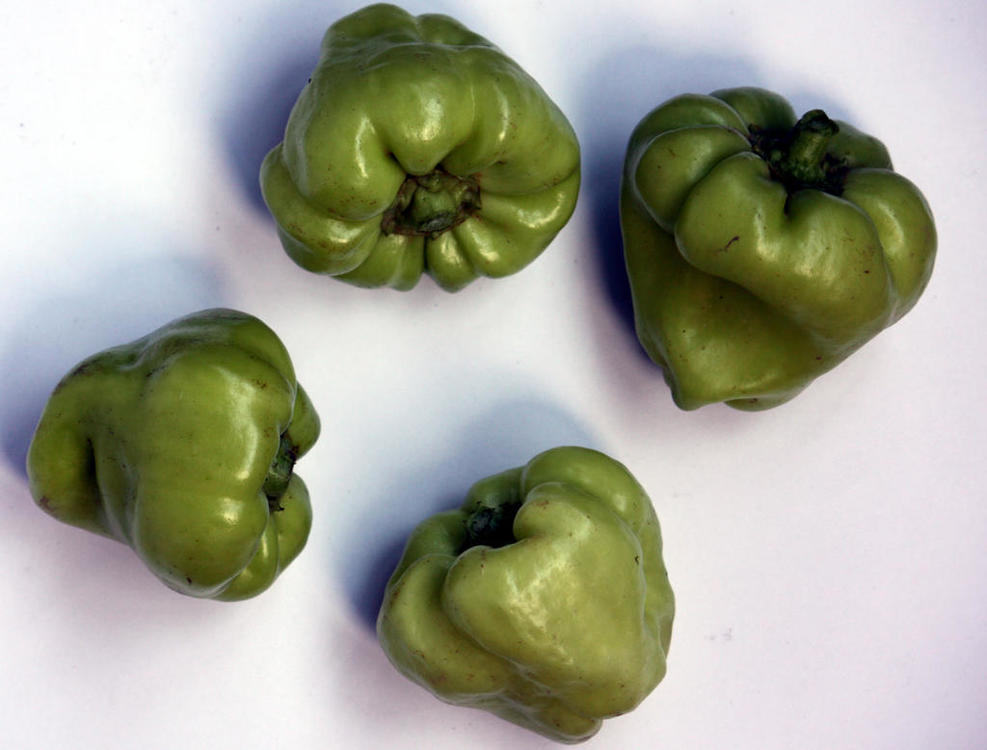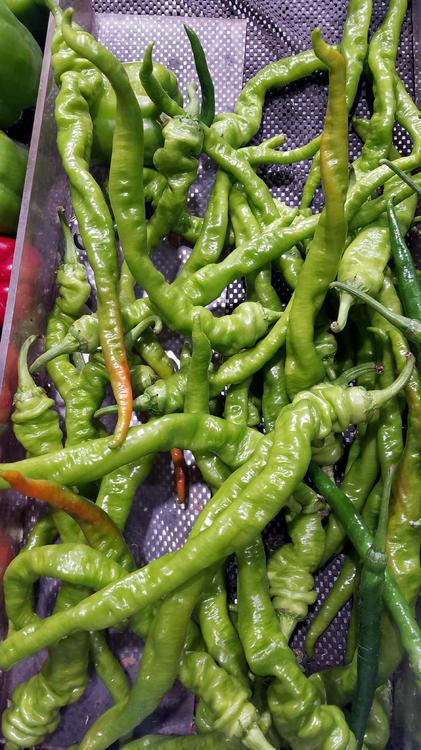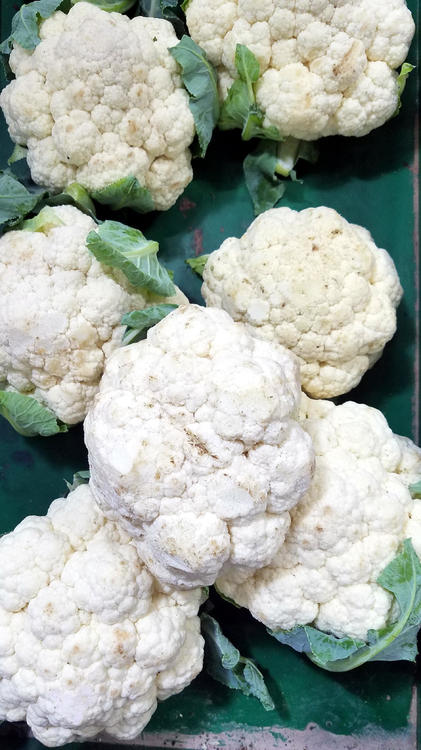-
Posts
16,669 -
Joined
-
Last visited
Content Type
Profiles
Forums
Store
Help Articles
Everything posted by liuzhou
-
I have been unexpectedly out of town for a couple of days, eating very average hotel food, so was glad to get back this afternoon and do some shopping in the rain. I picked up some chicken, but little else, knowing I had stuff in the fridge that needed dealing with. I wanted some spinach, but the early birds had taken it all. I'm not going to give this a name. It is a strange mix of cultures, but I enjoyed it. Chicken chunks (not refined enough to call cubes) marinated in the usual Chinese way with Shaoxing, garlic, ginger and chilli. Cooked with toasted fennel and cumin. Then braised with chick peas, leeks and turmeric. Served with rice and wilted nothing else, on account of the spinach disappointment. Never mind. It left my mouth happy.
-
Another seaweed we occasionally get is 裙带菜/裙帶菜 (Mand: qún dài cài; Cant: kwan4 daai3 coi3). This is what is widely known as 'wakame' from the Japanese or 'sea mustard' in English. I've only ever seen it pre-prepared and dressed on the sushi counter of local supermarkets. I always buy it when I see it. A favourite.
-
A couple of late arrivals. Canavalia gladiata 刀豆 (Mand: dāo dòu; Cant: dou1 dau6*2) are what you possibly know as sword beans, although that term is sometimes used for other species. These are almost always simply stir fried. We also get the dried beans which are known as 红刀豆/紅刀豆 (Mand: hóng dāo dòu; Cant: hung4 dou1 dau6*2) meaning 'red sword beans', as the beans in the pod are - you guessed, red!
-
MSG is in the list of ingredients.
-
-
竹 (Mand: zhú; Cant: zuk1) is one of the world's most beautiful plants and definitely the most useful. It is used for so many things. It's a building material - people make houses from it. It is as strong if not stronger than steel and is used as scaffolding across China, but especially in Hong Kong. I look around my home and see this plant everywhere. I have clothes made from it. The pen holder on my desk is made from it. You can even buy computer keyboards and mice made from it. It is made into paper. In the kitchen, it is even more apparent. Chopping boards, brushes, rolling pins, bowls, baskets, serving dishes, mats, chopsticks, toothpicks and more. The only thing here which isn't bamboo is the metal hanging ring on the left. And we eat it. I am of course, talking bamboo. There are over 1,400 different species but we mainly eat the shoots of only a few. Phyllostachys edulis and Bambusa oldhamii in particular. In Chinese the shoots are 竹笋 (Mand: zhú sǔn; Cant: zuk1 seon2) often abbreviated to 笋 (Mand: sǔn; Cant: seon2). Bamboo shoots Bamboo shoots contain a cyanogenic glycoside that produces cyanide in the gut, so must be prepared correctly by thorough cooking. The shoots are boiled, then peeled and sliced. These can then be stir fried along with other ingredients. Peeled shoots Sliced and peeled sweet bamboo The bamboo pictured above is referred to as 甜笋 (Mand: tián sǔn; Cant: tim4 seon2) or sweet bamboo. It is sold preprepared in many supermarkets and just needs frying. Winter bamboo is harvested around November to December. I haven't seen it yet this year. Winter bamboo Bamboo is also pickled and is an important ingredient in Liuzhou's signature dish 螺蛳粉 (Mand: luó sī fěn) Luosifen - river snail noodles. The leaves of bamboo plants are used in the kitchen, too. The are used to wrap various foods, especially 粽子 (Mand: zòng zi; Cant: zung3 zi2), sticky rice dumplings. Bamboo leaves Zongzi The canned bamboo shoots available in many overseas Chinese or Asian stores are unknown here. In fact canned goods at all, are rare. This is the whole of the canned goods section of one of the city's largest supermarket. L: Luncheon meat; R Canned fish
-
The world’s most expensive ham Well, that's my list for Santa sorted out, then. Interesting article.
-
Yes, They are occasionally called 甜薯 (Mand: tián shǔ ; Cant: tim4 syu4 ) or 'sweet potato' here, too
-
A couple of related strays 红薯 (Mand hóng shǔ; Cant: hung4 syu4). Red potato. These are very popular, especially at this time of year and through the winter. They are often steamed with other root vegetables. Alternatively, there are dozens of guys like this, selling them roasted in the streets. Then we have these. Known as 黑薯 (Mand hēi shǔ; Cant: hak1 syu4), meaning 'black potatoes' or, perhaps more accurately, 紫薯 (Mand zǐ shǔ; Cant: zi2 syu4), 'purple potatoes'. The skin can be purplish black, but the flesh is this bright purple, which fades when they are cooked. They are used in the same manner as the red potatoes.
-
Re: seaweed. Please note, for those who don't already know, what is served in western Chinese restaurants as 'crispy seaweed' isn't seaweed. It is cabbage!
-
The second seaweed we get is 紫菜 (Mand: zǐ cài; Cant: zi2 coi3), literally 'purple vegetable'. This is Porphyra umbilicalis or laver. It turns up in all sorts of places, though we don't get it fresh. It comes in circular packs of dried weed like this: This is used in soup, often with seafood or with egg. Laver and egg soup These soups are sold as instant soup mix everywhere. Processed using a technique similar to paper-making this becomes known as 海苔 (Mand: hǎi tái; Cant: hoi2 toi4), which sushi fans know of as nori, used for wrapping sushi rolls etc. It is used the same way here - yes, China loves sushi. After all, they invented it! Nori style seaweed is also seasoned in various ways, often with soy sauce and sold as a snack item. Every supermarket and corner shop has it. It also features in many other snack items. and even Lay's make seaweed chips using it. as does the maker of my favourite crackers to use with cheese.
-
Yes. In salted eggs. I bet they taste nothing like salted eggs.
-
Two new to China and being promoted in my local supermarkets. Hero Salted Egg Yolk Flavour Young Monster Durian Flavour I surrender.
-
-
This is technically algae, but used as a vegetable and it sure isn't animal or mineral, so I'm putting it here. Seaweed in Chinese is 海藻 (Mand: hǎi zǎo; Cant: hoi2 zou2). It refers to all varieties, edible or not. Edible seaweed is 海菜 (Mand: hǎi cài; Cant: hoi2 coi3), literally meaning 'sea vegetable'. Told you it belongs here. We get two main varieties, but in many different forms. First up: 海带/海帶 (Mand: hǎi dài; Cant: hoi2 daai3) is kelp. It is also widely known as kombu, the Japanese term 昆布. China is by far the largest commercial producer. We get it fresh, dried and pickled. Fresh blades are sold, but they are also served cut into thick and thin slices. Kelp Blades Thick Strips Thin strips. It is also common to see it as 海带结/海帶結 (Mand: hǎi dài jié; Cant: hoi2 daai3 git3), kelp knots. All the above formats are also available dried. I won't trouble you with images of each, but here is the dried whole blades. Many supermarkets also sell prepared "salads". Here are a couple. Kelp Knot Salad Kelp Strip Salad Finally, kelp is pickled. You can buy it loose or in these small bags as a snack. Flavoured with chilli. The sushi counters in some of the local supermarkets also sell the Japanese sauce, ponzu, which is made from kelp. Apart from the salads and pickles, kelp is mainly used in soups or stir fried as a vegetable. Fresh kelp should always be cooked as seaweeds often contain parasites.
-
First time round, I read that as Prosecco minestrone.
-
I've found that putting it into my mouth helps.
-
Baby octopus with garlic, ginger, red chilli, Shaoxing wine, soy sauce over stir fried kohlrabi and carrot slivers with green chilli and vinegar. Served with rice.
-
I agree.The important thing is the taste. But I was asked about the alcohol content, so I answered.
-
Well, it took until late afternoon, but... The most popular brand for cooking is labelled as having ≧15% ABV. The one I normally go for is slightly higher at ≧16% ABV. This equates to the lower end of the scale for sake. Premium drinking quality Shaoxing may be slightly higher.
-
I like it raw in salads, too, but that is not a Chinese treatment. They don't generally do raw.
-
This one will need further investigation. They were labelled 青泡椒 (Mand: qīng pào jiāo; Cant: cing1 pauu1 ziu1), which literally means 'green bubble pepper'. However, 泡椒 (Mand: pào jiāo; Cant: pauu1 ziu1) means 'pickled pepper'. This specimen clearly wasn't pickled. It was fresh. Do they name it because of its bubble shape, or does it mean something like 'pickling pepper'? Of course, before inflicting this predicament on you, I have asked around my more knowledgeable friends and she said "I don't know". Well actually, she said "不知道" (Mand: bù zhī dào) which is the same thing. On account of her being Chinese. They were small; around 2 inches/5cm at most in any direction. And HOT.
-
Another couple of chilli peppers. Although these look a bit similar to the 'beautiful people chillies' in this post, they are longer and identifiable by their crooked, knobbly nature. They are 牛角椒 (Mand: niú jiǎo jiāo; Cant: ngau4 gok3 ziu1) or 'Bullhorn peppers' Taste and heat much the same as the 'beautiful people'.
-
China is also the top producer of Brassica oleracea Botrytis, the cauliflower. The most common Chinese name is 菜花 (Mand: cài huā; Cant: coi3 faa1), meaning 'vegetable flower', but as this name is also used to mean the rape plant mentioned a few pages back, to be specific, cauliflower is sometimes called 椰菜花 (Mand: yé cài huā; Cant: je4 coi3 faa1), meaning 'coconut vegetable flower', presumably a reference to the white head. Like broccoli above , this is usually stir fried, especially with Chinese smoked ham or sausage.


